Abit iDome Digital Speakers Review
Abit iDome Digital Speakers
Abit diversifies somewhat with a set of digital speakers. But how do they sound?
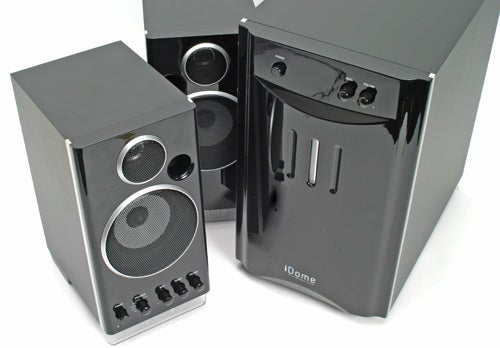
Verdict
Key Specifications
- Review Price: £149.00
First seen at CeBit, and then at Computex, these all digital speakers from Abit have had my appetite whet for too long. Finally they have arrived and much to the annoyance of everyone in the office upstairs, I gave them a thorough test.
The units I was sent came in two boxes. One had a set of speakers, and the other had a sub-woofer. As far as I can tell, these are sold as separate units – but they can and will work together as one system.
If there is one criticism that can’t be levelled at these speakers, it’s being unattractive. I really like the polished black finish and the cones showing through the metal grilles. On the primary speaker that contains the amp, there is also a red LED that lights up the acrylic stand. I don’t like this much – partly because the other speaker doesn’t have one to match and partly because the power LED is blue – it wouldn’t have been hard to make them match, would it?. Luckily, there is a switch on the back to turn the red light off.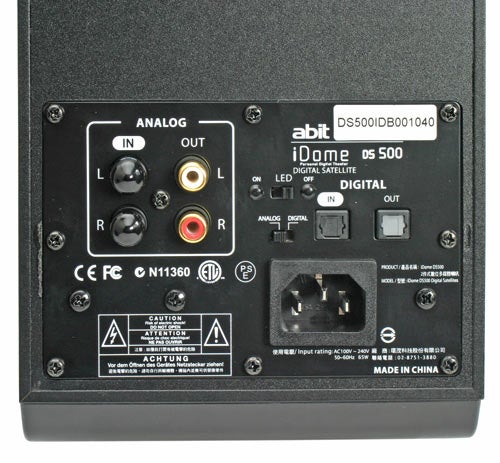
The speakers themselves have both analogue and digital inputs, but quite why you’d buy these speakers and plug in an analogue source is beyond me. It is however useful for plugging in a secondary device such as an MP3 player. Unfortunately, you can’t run a digital and analogue source at the same time, so you’d need to flick a switch on the back of the device.
One of the great benefits to having a digital input, is that it doesn’t matter what your sound card is – a digital signal is transmitted to the speakers. This means no interference and no degradation of audio quality. Sound reproduction is entirely down to the speakers. With pretty much all motherboards shipping with fairly decent onboard sound and an optical output, you can almost justify spending a little extra on speakers with digital input.
It is worth noting that these speakers only have optical S/PDIF, not coaxial support. If necessary, a third party adapter can be used, or you can even make your own, but it’s something worth checking on your PC before purchase.
On the back of the primary speakers, you can see not only optical in, but out. The optical output will replicate the input S/PDIF signal as a way of daisy chaining multiple devices – in this case, the sub-woofer.
The second speaker is connected with an analogue cable. No power is required at all.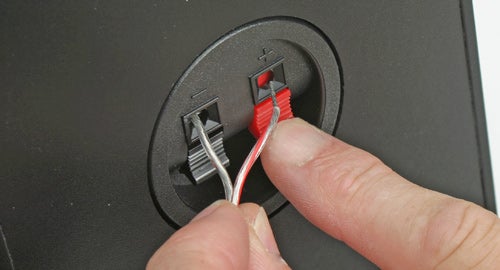
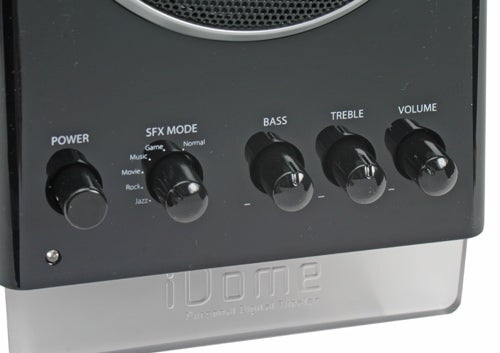
At the front of the speakers are the controls. The left switch adjusts the graphic equaliser presets, while the bass and treble adjusters, well, adjust bass and treble. I didn’t find that the EQ settings improved sound quality much at all. A decent set of speakers shouldn’t need to be adjusted depending on the type of music being played after all.
The general sound quality of these speakers is pretty good and the bass response is admirable. However, when turning the bass knob past the middle point, the sound very quickly became distorted.
The volume of these speakers is very impressive and could happily fill a decent sized room. They seem to be much better suited to dance music than any other variety though. This is often due to the simplistic nature of the music. When trying to play more complex pieces, they soon came unstuck. The overall sound stage just felt a little lacking – mainly at the upper end. That’s why I found putting the treble nearer the top made the music sound a little better.
Overall though, these Abit speakers felt balanced and adding a sub-woofer seemed like a bad idea. But there are a number situations where a little more bass can enhance things – gaming and the aforementioned dance music for instance. 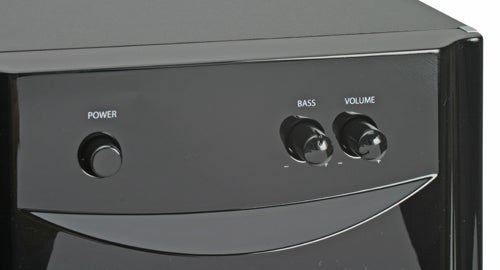
The sub-woofer has a much more simplistic control set. The signal is daisy chained through the first set of speakers. As you can see, you can only adjust the volume, and the intensity of the bass. The biggest issue I had with this system is that the volume on the speakers and subwoofer is entirely independent. This means, if you turned the master volume down on the speakers, the sub-woofer would stay at whatever volume it was previously left at.
You can use this in your favour though. You can use the independent volumes as a way of balancing exactly how much bass you would like. Then, volume can be controlled via Windows instead.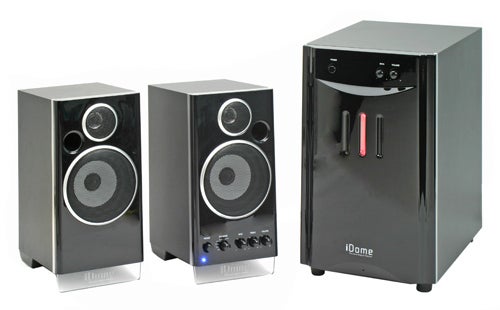
I was however, rather disappointed with the sound of the sub-woofer. I felt the speakers were fairly balanced, so adding more bass didn’t do much for the sound. The bass wasn’t particularly punchy and almost felt slightly delayed from the rest of the music. The frequency cut-off could have been better too. With the volume on the speakers off, quite a lot of the higher frequencies were leaking in to the sub.
”’Verdict”’
My biggest disappointment has been the sub-woofer, which I really didn’t think did Abit any favours. If you are after a decent bass sound, you’d be better off buying a set of good 2.1-channel speakers.
The speakers themselves though were fairly reasonable and far from unbearable, which means that it purely comes down to a price decision. At an RRP of £150 this set seems overpriced when the excellent Acoustic Energy Aego M speakers are now available for around £82 and offer amazing sound quality by comparison. With competition like that on the market, Abit is going to have its work cut out with the iDomes.

